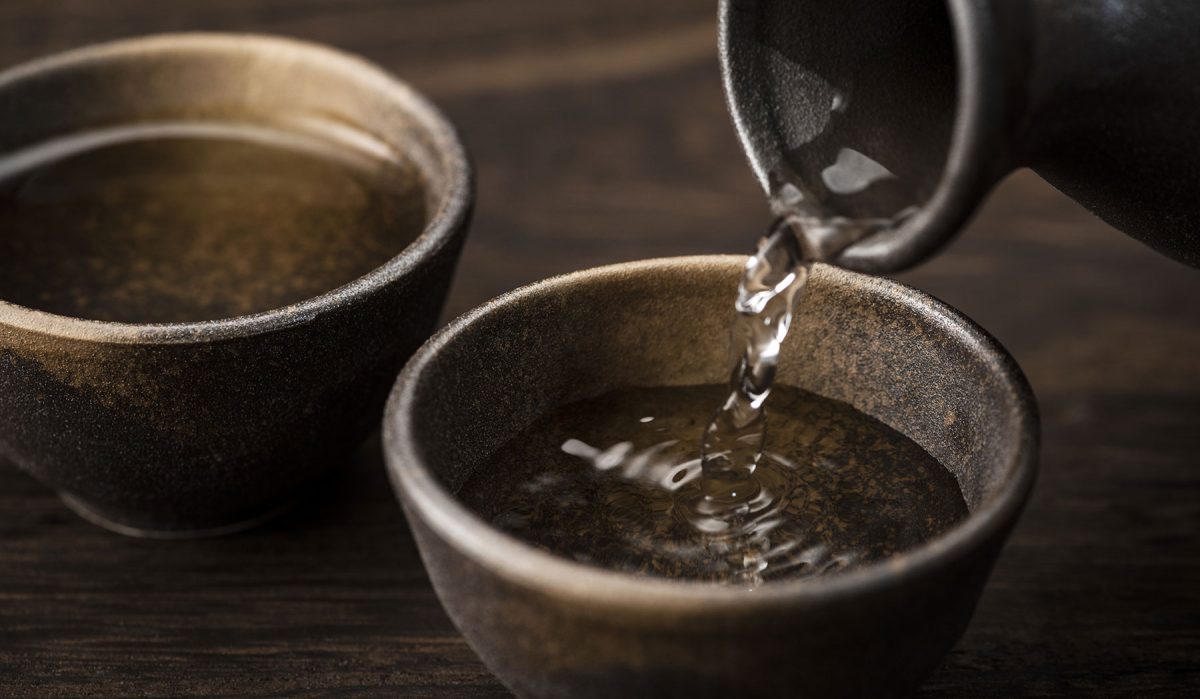Sake, with an accent on the “e” pronounced like the e in “end”, is Japan’s most famous drink.
It is made from hulled rice and the best and freshest spring water available, with a very low maganese and iron content. The hulled rice is soaked in the water then steamed. It is then steamed, and mold is added to a portion of it to start the fermentation process. This mold is aspergillus oryzae, called koji in Japanese.
Next, the portion of the rice with the starter is placed in a warm woom to ferment. It breaks down to glucose and micro organisms multiply. This is added to the other portion of rice along with more spring water and yeast for the final stage.
Sake is created when distilled alcohol is added to the fermented rice, at the right time. This stops the fermentation. The liquid is then filtered, and there you have sake, with about 18-20 percent alcohol.
When it gets to your cup or glass, the alcohol content will have dropped to 15 percent or so, as it is filtered again and diluted with a bit of spring water.
Like wine, there are grades for sake as well. For the type of sake that has alcohol added to it, the grades are from best to least: honjozo-dai-ginjoshu, honjozo-ginjoshu, honjozo-shu, futsu-shu. Futsu-shu is best for cooking only.
For grading of Junmai-shu, which is sake that does not have any added alcohol, the best is junmai dai-ginjoshu, then junmai ginjoshu. The lowest grade is just junmai-shu.
Sake has a low alcohol content, though when heated it seems to go right to your head anyway. It can also be served chilled to bring out the subtleties in its flavour, best for dai-ginjoshu grades.
If you’re serving the sake warm, pour into a a small ceramic bottle (tokkuri). It normally has a fat lower part with a narrow neck to hold it. This can be placed into a pot of hot water, which should not be boiling. As soon as the bottle feels warm, it should be served in small ceramic cups (ochoko) that accompany the bottle. never boil or overheat the sake, as it destroys the flavour and eliminates the alcohol content.
When served cold, simply pour it into wooden box cups. It keeps the sake cold.
